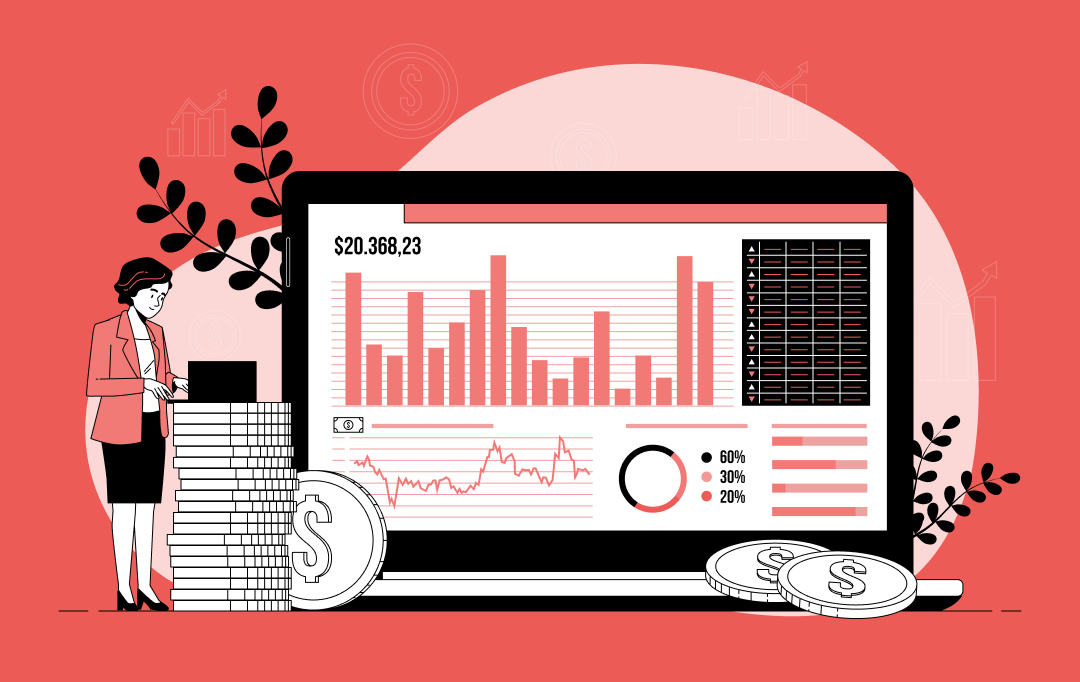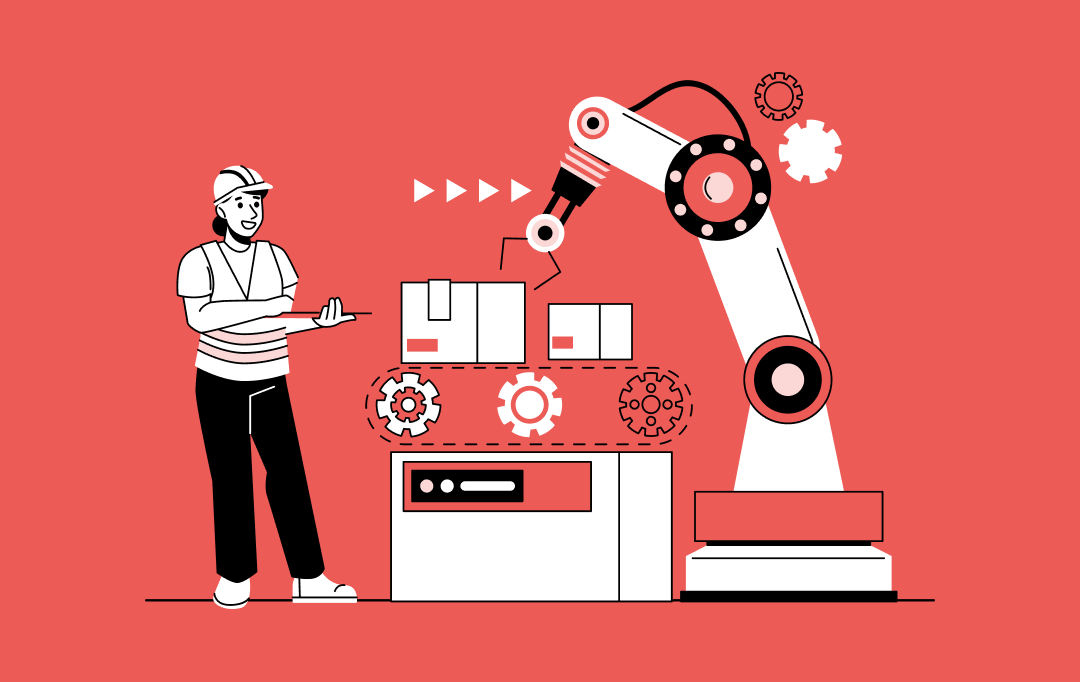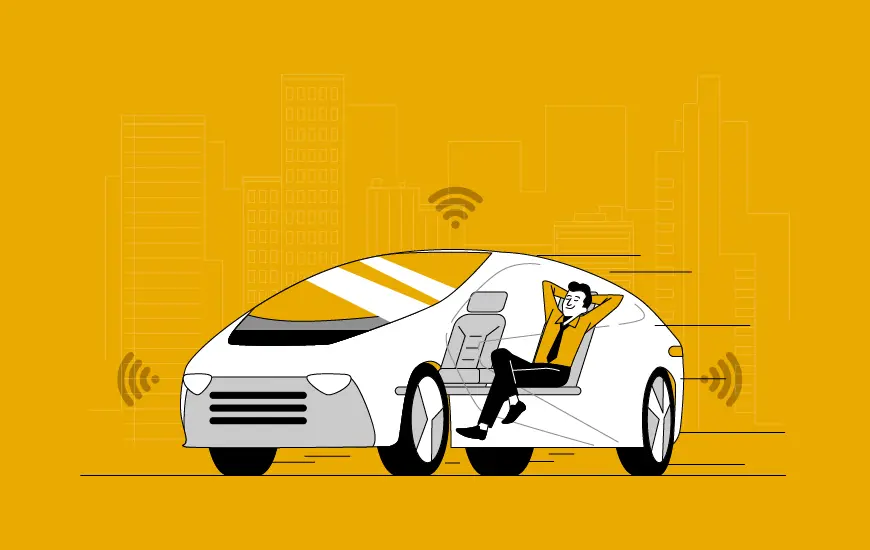Self-driving cars are in all the rage right now. The feeling of not getting overwhelmed while driving or overly focused on the directions has made self-driving cars’ space flourishing.
While the outcome of the driving experience is that of contentment, the way vehicles reach that stage is a complex one. An extensive utilization of technologies like automotive analytics and artificial intelligence is required for a car to drive on its own while keeping track of the speed, dodging traffic, and updating humans on the vehicle’s needs. An intelligence that involves several technologies and pieces of machinery coming together.
Achieving the level of automation and time-sensitive intelligence requires accessing and translating massive sets of data into action and insights, thus paving the road for big data in the automotive industry.
In this article, we are going to dive into the origin and role of automotive software development services and analytics solutions which go beyond making the self-driving experience smooth and autonomous. But before we dive into the role of big data for autonomous driving, let us first answer a few questions that you will get asked when you have to detail the technology’s involvement in space.
- What amount of data is generated through a self-driving vehicle?
It is estimated that an autonomous vehicle generates over 4,000 GB data every day divided into separate sections like –
- Camera – 20-40 KB per second
- Radar – 10-100 KB per second
- Sonar – 10-100 KB per second
- GPS – 50 KB per second
- LIDAR – 10-70 KB per second.
- Is the current fleet of autonomous vehicles truly driverless?
In its current state, big data analytics in the automotive industry is completely involved in only till Level 2 of driving automation. A majority of cars that are operative in the self-driving space work in a way that the vehicle performs acceleration and steering while humans monitor all the tasks and take over control whenever they deem necessary.
There will be more than 30 million autonomous vehicles on the road by 2040
The Technicalities of Automotive Data Analytics
Big data and machine learning in autonomous driving runs on sensors built in the cars. The information that comes in from the multiple in-car sensors are processed and analyzed in microseconds, enabling not just a safe movement from point A to point B but also passing information about the road conditions, communicating with other vehicles, and informing the owners about vehicle issues.

In addition to these sensors, there is one other crucial component in the autonomous driving domain: the automotive data analytics software that helps store and analyze the data sets. The software, being connected to a network, passes information from the sensors to the cloud in a way that the response time to those conditions is instantaneous, especially after the introduction of 5G in automotive.
An AI-based self-driving car should have sensors, automotive analytics solutions, and a connection to a cloud server. Next, the car should know its location, for which it makes use of GPS. Together, the data that comes from the internal sensors, such as compasses and speedometers, defines the direction and speed.
Once a vehicle knows its location, it gets easy to know what is around it by using lidar and radar to localize itself inside this map. Here, elements like markers, signs, and other obstacles are taken into consideration.
Using the collected data, the driverless car builds strategies for different situations that may occur on the road. Additionally, data sharing between autonomous vehicles aids in avoiding traffic jams, reacting to emergency situations, and taking weather conditions into account.
To sum up, big data in the automotive industry can be used in the following ways –
- Look and sense – get information; plan and respond on the basis of the collected data
- Map the surroundings in detail
- Identify speed, range, and distance through lidar and cameras
- Communicate with other cars to share information.
Now that we have looked into the core of analytics in automotive industry , let us look into some role of big data in autonomous vehicles through the use cases.
Role of Data Analytics in the Automotive Industry
Big data analytics in the automotive industry has grown to unimaginable levels. Right from powering self-driving cars to building intelligent traffic systems, AI in its different forms has changed how we travel and interact with vehicles. Now while the role of big data in autonomous vehicles can be seen in the manufacturing, price setting, and customer experience space, for this article, we will be looking into the contributions of big data in automotive industry.
Sensing and Perception
Self-driving cars use several sensors like radar, lidar, camera, etc., to collect data about their surroundings. The data then gets processed and analyzed through big data algorithms for creating a detailed environment map to identify objects like traffic lights, other vehicles, and road signs.
Decision Making
Autonomous cars use data analytics in the automotive industry to make real-time decisions on the basis of data that they gather from the in-car sensors. For example, if the car detects another vehicle getting too close, it will use big data to choose the best course of action, either slowing down or stopping.
Predictive Modeling
The industry has been using big data and machine learning to predict others’ behavior in autonomous driving. The technology combination helps the vehicle anticipate movements and problems that might happen with the car and then take timely action to avoid them.
Natural Language Processing
Another use case of automotive industry data analytics can be seen in the cars being equipped with voice recognition technology which enables the passengers to communicate with the car through their natural language. The technology, in turn, helps the car understand and respond to the user’s spoken commands.
The reasons behind growing instances of big data applications in the automotive industry are evident. But at the same time, we cannot negate the fact that automotive analytics solutions are not getting incorporated beyond Level 2. Let us look at some challenges that need an industry-wide solution.

Challenges of autonomous driving through data analytics
The expectations from big data in the automotive industry are growing exponentially, especially as the automotive industry is planning to make Level 4 and 5 mainstream in the coming years. However, there are a number of complications that are yet to be addressed. Let us peek into the challenges of implementing big data in automotive industry.
- Varied data sets – For predictive analytics in the automotive industry to work, the blend of supervised and unsupervised datasets should be proper and repetitive. However, when driving, there are multiple instances where accidents happen because of nobody’s fault. Additionally, numerous events are extremely rare in nature. So the challenge is to create patterns from several of these isolated events.
- Data storage – A recent report by Western Digital found that the storage capacity per vehicle could reach 11 terabytes by 2030. To accommodate this massive amount of data, it is critical for businesses to bring data storage and processing from the cloud to the vehicle itself via satellite transmission.
- Security concerns – Since data-driven automotive vehicles collect data from the public where the expectations from privacy is limited, the users are less likely to be in control of their data, as they won’t be able to opt out of data collection.
Owing to these industry-level challenges in the adoption of big data for autonomous driving, the market expectation is that the self-driving space will reach its maturity in Level 2 before the exploration work starts on Level 3 and above.
Standing at today, there’s a need for automotive data analytics services that would help automated vehicles with this roadmap. At Appinventiv, we specialize in working with automotive analytics solutions that excel in collecting the massive amount of data and routing them to the system which needs them. Moreover, our Data Analytics Solutions providers aggregate and enrich the mass of data by organizing them in a digestible format for the vehicle to use.
FAQs
Q. How is big data being used in automotive analytics?
A. The role of big data in automotive data analytics can be seen in multiple facets. Right from making self-driving experience organic to designing future-ready vehicles, and finalizing the price range, the technology is fast becoming pivotal for the space’s existence.
Q. What are the benefits of data for reliable autonomous driving experiences?
A. The benefits of automotive analytics driven by a massive amount of datasets can be witnessed through – improved sensing and perception, faster decision making, predictive modeling, and natural language processing.
Q. What are the challenges in implementing big data analytics for autonomous driving?
A. The limitations that surround implementation of advanced data analytics in automotive industry are majorly driven by industry-grade challenges such as presence of multiple isolated events, security concerns, and absence of a data storage mechanism that can store and process terabytes of data.


- In just 2 mins you will get a response
- Your idea is 100% protected by our Non Disclosure Agreement.

Unleashing the Role of Data Analytics in Driving Smarter Banking Decisions
The use of data analytics in banking is transforming how this data is interpreted and applied. Banks are using this data to make decisions that matter—fraud checks, loan approvals, or marketing campaigns. The focus has shifted: from storing data to using it smartly, and from pushing products to understanding people—being customer-centric. This shift is also…

10 Use Cases and Examples of How Pharmacy Data Analytics is Transforming Operations and CX
Data has become the currency of modern business, and the pharmacy sector is no exception. From inventory optimization to regulatory compliance, pharmacies today face many challenges that demand precision and agility. Well, pharma data analytics is solving all these conundrums as the main lead, a transformative approach that now empowers businesses to get actionable insights…

10 Use Cases and Benefits of Predictive Analytics in Manufacturing
Are you trying to stay in today’s manufacturing game with that old-school data analytics approach? Not gonna happen, buddy! Think about that old-school grind: manufacturing plant techies had to hustle around, scribbling notes and logging maintenance records by hand. All that manual intervention and hassle led to nothing more than messy data and bad calls.…

















